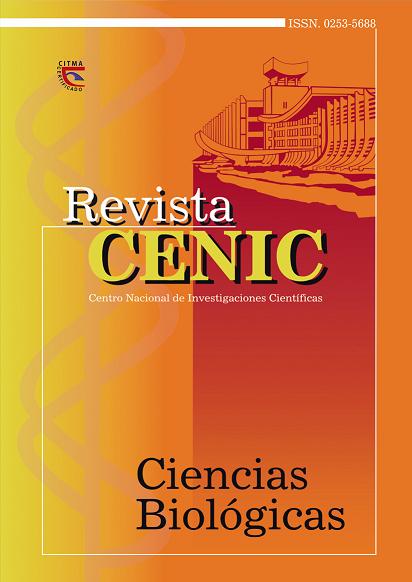In vitro modeling of the environmental performance of the vaccine strain Vibrio cholerae 638
Keywords:
cholera vaccine, Vibrio cholerae, attenuated strains, environmental persistenceAbstract
The attenuated strain Vibrio cholerae 638 (O1, El Tor, Ogawa) is the active ingredient of oral vaccine candidate CV638, product well tolerated and immunogenic in several studies with healthy volunteers. The administration of live attenuated biological agent involves its excretion in the feces of vaccine recipients. Then in the regulatory context, there is concern about its potential environmental impact and the possibility of reversion to virulence. This paper is an experimental approach to the possible performance of such strain on the environment. It was assessed the survival of VC638 using water from different sources in several laboratory conditions. The results suggest that this strain has no advantages over its wild type parental strain to survive in optimum or minimal growth conditions. Strain susceptibility to stress conditions that included sodium dodecyl sulfate and hyperosmotic environment was also determined. The results suggest that the vaccine strain does not possess properties that favor its performance against these agents. In addition, it was tested their resistance to horizontal gene transmission, concluding that VC638, as toxigenic strains currently circulating in the Caribbean, is resistant to natural transformation in the presence of chitin. The transformation frequency of VC638 is 103 times lower than that of its toxigenic parental strain. Finally, VC 638 showed no signs of possible advantages to compete and survive in natural environments.Downloads
Downloads
Published
How to Cite
Issue
Section
License
Los autores que publican en esta revista están de acuerdo con los siguientes términos:
Los autores conservan los derechos de autor y garantizan a la revista el derecho de ser la primera publicación del trabajo al igual que licenciado bajo una Creative Commons Atribución-NoComercial-CompartirIgual 4.0 Internacional que permite a otros compartir el trabajo con un reconocimiento de la autoría del trabajo y la publicación inicial en esta revista.
Los autores pueden establecer por separado acuerdos adicionales para la distribución no exclusiva de la versión de la obra publicada en la revista (por ejemplo, situarlo en un repositorio institucional o publicarlo en un libro), con un reconocimiento de su publicación inicial en esta revista.
Se permite y se anima a los autores a difundir sus trabajos electrónicamente (por ejemplo, en repositorios institucionales o en su propio sitio web) antes y durante el proceso de envío, ya que puede dar lugar a intercambios productivos, así como a una citación más temprana y mayor de los trabajos publicados (Véase The Effect of Open Access) (en inglés).















